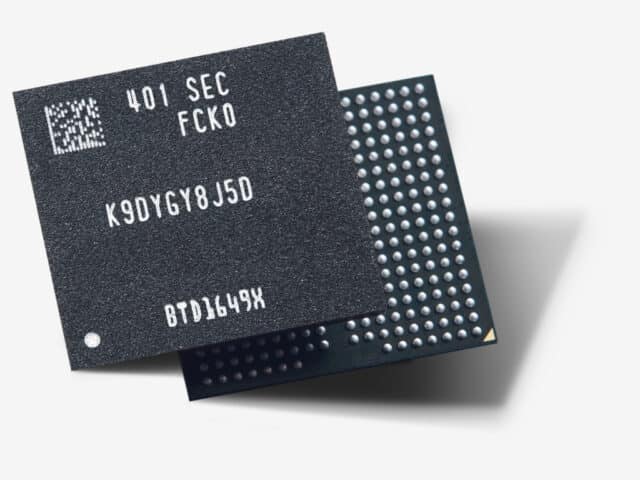Samsung begins mass production of 1Tb 9th-Gen V-NAND

Samsung has started mass production of its one-terabit (Tb) triple-level cell (TLC) 9th-generation vertical NAND (V-NAND). This is seemingly aimed at strengthening the company’s position in the NAND flash market, particularly within the high-performance solid state drive (SSD) segment.
SungHoi Hur, Head of Flash Product & Technology at Samsung’s Memory Business, commented on the launch: “With the industry’s first 9th-gen V-NAND, we aim to meet the growing demand for high-performance, high-density SSD solutions that are suitable for AI and other future applications.”
The 9th-generation V-NAND features the smallest cell size and thinnest mold in the industry, improving bit density by about 50% compared to the 8th-generation V-NAND. Innovations such as cell interference avoidance and life extension techniques have been implemented to enhance the quality and reliability of the product. The removal of dummy channel holes has also effectively reduced the planar area of the memory cells.
Samsung’s introduction of “channel hole etching” technology demonstrates a refinement in process capabilities. This technology involves the stacking of mold layers and simultaneous drilling through the industry’s highest cell layer count in a double-stack structure, which allows for improved electron pathways and fabrication productivity.
The new V-NAND also incorporates the “Toggle 5.1” interface, which facilitates increased data input/output speeds by 33%, reaching up to 3.2 gigabits-per-second (Gbps). Additionally, Samsung plans to enhance its SSD offerings by incorporating support for PCIe 5.0.
Efforts to improve power consumption have resulted in a 10% reduction compared to the previous generation, emphasizing the company’s commitment to reducing energy use and carbon emissions. This makes the 9th-generation V-NAND a more environmentally friendly option for future technological applications.
Mass production of the 1Tb TLC 9th-generation V-NAND began this month, with Samsung also planning to introduce a quad-level cell (QLC) model later in the year.
